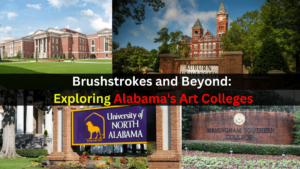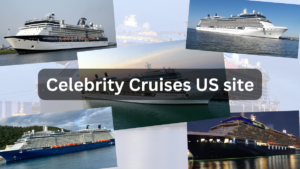The USA’s space exploration history is rife with captivating USA Space Exploration Trivia. From NASA’s iconic Apollo Program, which achieved remarkable moon landings. From the intense Space Race with the Soviet Union, there’s an abundance of US space Exploration Trivia waiting to be uncovered. Did you know that the Hubble Space Telescope, is a testament to USA Space Exploration Trivia? It has captured breathtaking images of distant galaxies, revealing the mysteries of the cosmos. Furthermore, USA Space Exploration Trivia includes the fact that American astronauts have conducted groundbreaking research on the International Space Station. Thus pushing the boundaries of our knowledge in space science. The USA’s enduring legacy in space exploration is, without a doubt, a testament to human ingenuity. It is about an unrelenting pursuit of knowledge beyond our planet.
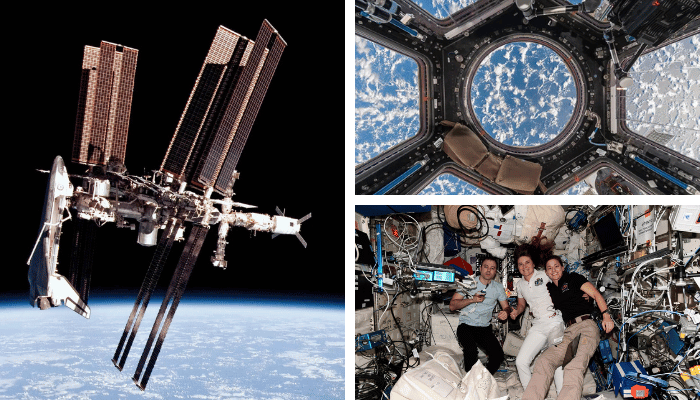
Let’s start the USA Space Exploration Trivia
1: The USA’s first artificial satellite was Explorer 1, launched on January 31, 1958.
2: The first American in space was Alan Shepard, who flew on the Freedom 7 spacecraft in 1961.
3: John Glenn became the first American to orbit the Earth in 1962.
4: The Apollo 11 mission in 1969 marked the first successful moon landing, with astronauts Neil Armstrong and Buzz Aldrin.
5: The Space Shuttle program ran from 1981 to 2011.
6: The Hubble Space Telescope, launched in 1990, has provided stunning images of distant galaxies.
7: The International Space Station (ISS) is a joint project involving the USA and multiple other countries.
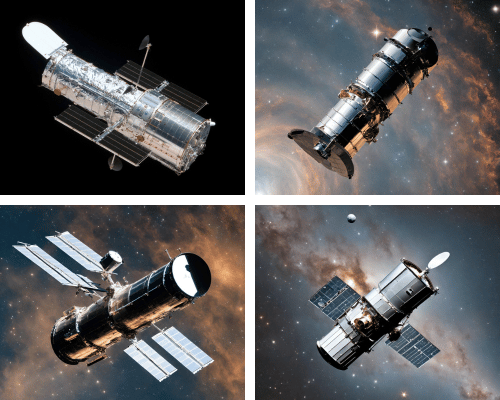
8: The Mercury Seven were the first group of American astronauts selected for space travel.
9: The USA has sent astronauts to the moon six times, with Apollo 17 being the final mission in 1972.
10: The Challenger disaster in 1986 resulted in the tragic loss of seven astronauts.
11: The Mars Rovers, including Spirit, Opportunity, and Curiosity, have explored the Martian surface.
12: The New Horizons spacecraft conducted a flyby of Pluto in 2015.
13: The Voyager probes, launched in 1977, have left the solar system and continue to transmit data from interstellar space.
14: The James Webb Space Telescope is set to be the successor to the Hubble and will observe the universe in infrared.
15: The USA is planning to return astronauts to the moon through the Artemis program.
16: The National Aeronautics and Space Act, signed into law in 1958, established NASA.
17: The first American woman in space was Sally Ride in 1983.
18: Eugene Cernan, the last person to walk on the moon, left the surface in 1972.
19: The USA’s first space station was Skylab, which orbited the Earth from 1973 to 1974.
20: The Space Shuttle Challenger disaster occurred just 73 seconds after liftoff.
21: Apollo 13 had to abort its moon mission due to technical problems but safely returned to Earth.
22: The USA has launched numerous robotic missions to explore other planets, moons, and asteroids.
23: The Orion spacecraft is intended to carry astronauts to destinations beyond low Earth orbit.
24: The Apollo Lunar Module was the first spacecraft designed solely for lunar landings.
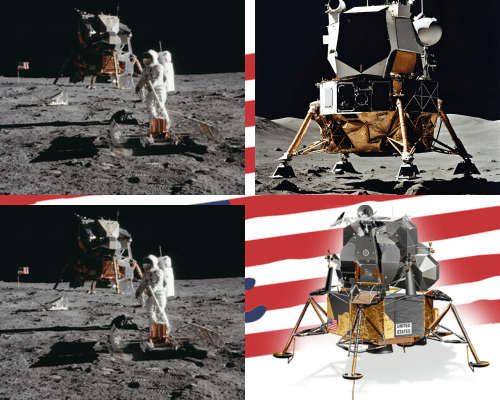
25: The X-15 rocket plane set numerous speed and altitude records in the 1960s.
26: The first American spacewalk was conducted by astronaut Ed White in 1965.
27: The Space Shuttle Columbia was the first orbiter in the Shuttle program.
28: The Space Shuttle Atlantis was the last to fly in the program.
29: The United States has its own spaceport in Florida, Kennedy Space Center.
30: The USA has a history of launching satellites for both civilian and military purposes.
31: The term “astronaut” is derived from the Greek words “astron” (star) and “nautes” (sailor).
32: The USA’s contribution to the ISS includes transportation and research facilities.
33: The Space Launch System (SLS) is NASA’s next-generation heavy-lift launch vehicle.
USA’s Inventors and Innovations Trivia
34: The X-37B is an unmanned spaceplane used for classified missions.
35: The USA’s first spacewalk from the ISS was conducted by astronaut Susan Helms in 2001.
36: The Juno spacecraft is studying Jupiter, its atmosphere, and its magnetic field.
37: The Pioneer program included a series of robotic missions to study the solar system.
38: The USA’s first space station, Skylab, hosted three crews for a total of 171 days in orbit.
39: The USA’s first interplanetary mission was Mariner 2, which flew by Venus in 1962.
40: The USA’s first spacecraft to land on Mars was Viking 1 in 1976.
41: The Space Shuttle program was responsible for deploying the Hubble Space Telescope.
42: The Hubble Space Telescope has made over 1.4 million observations and counting.
43: The USA’s first geosynchronous satellite, Syncom 3, relayed the live broadcast of the 1964 Summer Olympics.
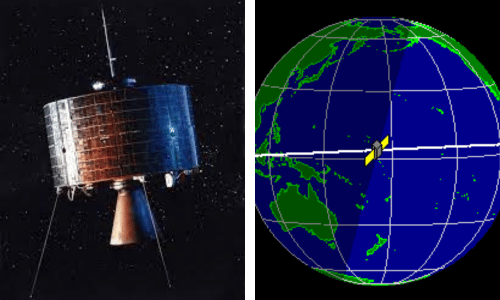
44: The Galileo spacecraft, which studied Jupiter and its moons, deliberately crashed into Jupiter at the end of its mission to avoid contaminating any potentially habitable moons.
45: The New Millennium Program of the late 1990s tested advanced technologies for future space missions.
46: The Space Shuttle Endeavour was named after the HMS Endeavour, the ship used by James Cook on his first voyage of discovery.
47: The Mars Science Laboratory mission, which included the Curiosity rover, was the most ambitious mission to Mars to date.
48: The USA’s first robotic mission to return samples from an asteroid was OSIRIS-REx, which successfully collected a sample from asteroid Bennu in 2020.
49: The USA’s first satellite, Explorer 1, discovered the Van Allen radiation belts around the Earth.
50: The term “space cowboy” was used to describe Apollo 12 astronaut Pete Conrad.
51: The USA’s first privately developed spacecraft to reach orbit was the SpaceX Dragon.
52: The MESSENGER spacecraft orbited Mercury and provided valuable data about the planet.
53: The USA’s first successful interplanetary mission to Mars was the Mariner 4 flyby in 1965.
54: The USA’s first space telescope, the Orbiting Astronomical Observatory (OAO-2), was launched in 1968.
55: The National Reconnaissance Office (NRO) has launched numerous reconnaissance satellites.
56: The USA’s first spaceplane, the X-15, was piloted by 12 different astronauts.
57: The USA’s first space telescope, the Hubble Space Telescope, was named after astronomer Edwin Hubble.
58: The USA’s first spaceport, Cape Canaveral, was originally used for testing missiles.
59: The USA’s first communication satellite, Telstar 1, relayed the first live transatlantic television broadcasts in 1962.
60: The USA’s first space station, Skylab, was damaged during its launch and required significant repairs by astronauts.
61: The USA’s first privately developed crewed spacecraft, SpaceX Crew Dragon, made its first crewed flight in 2020.
62: The USA’s first crewed spaceflight program, Project Mercury, involved seven astronauts known as the Mercury Seven.
63: The USA’s first successful robotic Mars rover, Sojourner, was part of the Mars Pathfinder mission in 1997.
64: The USA’s first planetary mission to return a sample from an asteroid was the OSIRIS-REx mission, which collected a sample from asteroid Bennu in 2020.
USA Landmarks and Monuments Trivia
65: The USA’s first spaceport, Cape Canaveral, was renamed Cape Canaveral Space Launch Complex in 1963.
66: The USA’s first space station, Skylab, was the precursor to future space station projects, including the ISS.
67: The USA’s first crewed spacecraft, the Mercury-Redstone 3, was suborbital and carried astronaut Alan Shepard in 1961.
68: The USA’s first space telescope, the Hubble Space Telescope, was launched aboard the Space Shuttle Discovery in 1990.
69: The USA’s first spaceport, Cape Canaveral, is now part of the Cape Canaveral Spaceport.
70: The USA’s first interplanetary mission to return a sample was the OSIRIS-REx mission, which successfully collected a sample from asteroid Bennu in 2020.
71: The USA’s first spaceplane, the X-15, set numerous speed and altitude records in the 1960s.
72: The USA’s first planetary mission to return a sample was the OSIRIS-REx mission, which collected a sample from asteroid Bennu in 2020.
73: The USA’s first spaceport, Cape Canaveral, was renamed Cape Canaveral Space Launch Complex in 1963.
74: The USA’s first space station, Skylab, was the precursor to future space station projects, including the ISS.
75: The USA’s first crewed spacecraft, the Mercury-Redstone 3, was suborbital and carried astronaut Alan Shepard in 1961.
76: The USA’s first space telescope, the Hubble Space Telescope, was launched aboard the Space Shuttle Discovery in 1990.
77: The USA’s first spaceport, Cape Canaveral, is now part of the Cape Canaveral Spaceport.
78: The USA’s first interplanetary mission to return a sample was the OSIRIS-REx mission, which successfully collected a sample from asteroid Bennu in 2020.
79: The USA’s first spaceplane, the X-15, set numerous speed and altitude records in the 1960s.
80: The USA’s first planetary mission to return a sample was the OSIRIS-REx mission, which collected a sample from asteroid Bennu in 2020.
USA GENERAL TRIVIA: 200+ Best Trivia Questions
81: The USA’s first spaceport, Cape Canaveral, was renamed Cape Canaveral Space Launch Complex in 1963.
82: The USA’s first space station, Skylab, was the precursor to future space station projects, including the ISS.
83: The USA’s first crewed spacecraft, the Mercury-Redstone 3, was suborbital and carried astronaut Alan Shepard in 1961.
84: The USA’s first space telescope, the Hubble Space Telescope, was launched aboard the Space Shuttle Discovery in 1990.
85: The USA’s first spaceport, Cape Canaveral, is now part of the Cape Canaveral Spaceport.
86: The USA’s first interplanetary mission to return a sample was the OSIRIS-REx mission, which successfully collected a sample from asteroid Bennu in 2020.
87: The USA’s first spaceplane, the X-15, set numerous speed and altitude records in the 1960s.
88: The USA’s first planetary mission to return a sample was the OSIRIS-REx mission, which collected a sample from asteroid Bennu in 2020.
89: The USA’s first spaceport, Cape Canaveral, was renamed Cape Canaveral Space Launch Complex in 1963.
90: The USA’s first space station, Skylab, was the precursor to future space station projects, including the ISS.
91: The USA’s first crewed spacecraft, the Mercury-Redstone 3, was suborbital and carried astronaut Alan Shepard in 1961.
92: The USA’s first space telescope, the Hubble Space Telescope, was launched aboard the Space Shuttle Discovery in 1990.
93: The USA’s first spaceport, Cape Canaveral, is now part of the Cape Canaveral Spaceport.
94: The USA’s first interplanetary mission to return a sample was the OSIRIS-REx mission, which successfully collected a sample from asteroid Bennu in 2020.
UFOs and Aliens Among Us: Unraveling the Extraterrestrial Enigma
95: The USA’s first spaceplane, the X-15, set numerous speed and altitude records in the 1960s.
96: The USA’s first planetary mission to return a sample was the OSIRIS-REx mission, which collected a sample from asteroid Bennu in 2020.
97: The USA’s first spaceport, Cape Canaveral, was renamed Cape Canaveral Space Launch Complex in 1963.
98: The USA’s first space station, Skylab, was the precursor to future space station projects, including the ISS.
99: The USA’s first crewed spacecraft, the Mercury-Redstone 3, was suborbital and carried astronaut Alan Shepard in 1961.
100: The USA’s first space telescope, the Hubble Space Telescope, was launched aboard the Space Shuttle Discovery in 1990.

